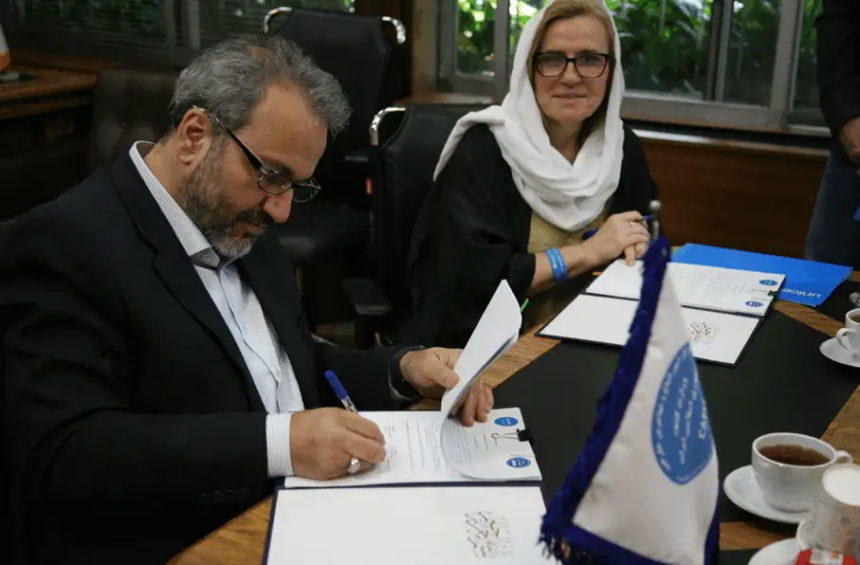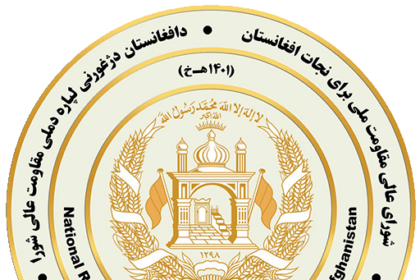RASC News Agency: In response to the growing humanitarian pressure facing Afghanistani refugees, particularly women and children, the United Nations Children’s Fund (UNICEF) and the Ministry of Interior of the Islamic Republic of Iran have signed a landmark memorandum of understanding. The agreement aims to strengthen critical services for displaced Afghanistani families in Iran who remain caught in the crosshairs of regional instability, deepening poverty, and restrictive immigration policies. Signed between UNICEF’s Iran office and the Bureau for Aliens and Foreign Immigrants Affairs (BAFIA), the agreement establishes a roadmap for collaboration in essential sectors including education, healthcare, social protection, and emergency preparedness. At a time when the lives of millions of Afghanistani migrants in Iran hang in the balance, this cooperation is seen as a vital step toward ensuring that the most vulnerable especially women and children can access the fundamental rights to safety, learning, and basic wellbeing.
Nader Yarahmadi, Director of BAFIA, hailed the agreement as “a valuable initiative for enhancing the quality of life among migrants, particularly women and children.” He acknowledged the grim realities confronting many Afghanistani families in Iran, noting that refugee children face “extremely distressing” circumstances. Women, he said, endure disproportionate burdens trapped between resource scarcity, legal precarity, and the growing pressure of overpopulated households. Monika Olszewska-Nielsen, UNICEF’s Acting Representative in Iran, expressed cautious optimism. She emphasized that this joint initiative must ensure every child in Iran regardless of nationality or legal status is granted the right to live in dignity, to grow, and to learn. She further noted that both UNICEF and Iranian institutions possess the capacity to respond effectively, even in times of national or regional crisis.
Yet, even as the agreement promises improved support mechanisms, the Iranian government has significantly escalated its deportation operations. According to official figures, an estimated four million Afghanistani nationals now face the threat of forced repatriation a trend that has provoked deep concern among international human rights observers. Women and children comprise the majority of this vulnerable population, many of whom were born or raised in Iran and have no viable future in Taliban-controlled Afghanistan. Despite these humanitarian efforts, the reality on the ground remains stark. Thousands of families are being pushed toward return to a homeland that, under the current Taliban regime, offers little more than systemic repression, institutionalized gender discrimination, and economic collapse. Returnees often find themselves in war-ravaged districts with no access to shelter, food, education, or even basic medical care. For women and girls, in particular, deportation equates to erasure from classrooms, from public life, and from any future beyond survival.
Of particular concern is the fate of Afghanistani girls. Once forced back into Afghanistan, most will be entirely cut off from education due to the Taliban’s blanket bans on girls’ schooling beyond primary levels. The forced return of these families, therefore, is not merely a logistical or administrative issue it is an act with generational consequences, effectively sentencing thousands of young girls to a life of illiteracy and systemic exclusion. Afghanistani civil society leaders and child rights activists have repeatedly called on the international community to shift its policy focus from short-term return mechanisms to long-term, rights-based integration strategies within host countries. They argue that real humanitarian protection means preventing deportation, ensuring access to legal residency, and investing in sustainable livelihoods for refugee families where they are. Unless Iran and the broader international community take firm, rights-based steps to halt forced repatriations and ensure permanent protection for Afghanistani refugees, such agreements however well-intentioned risk becoming symbolic gestures in the face of a deepening humanitarian disaster.






